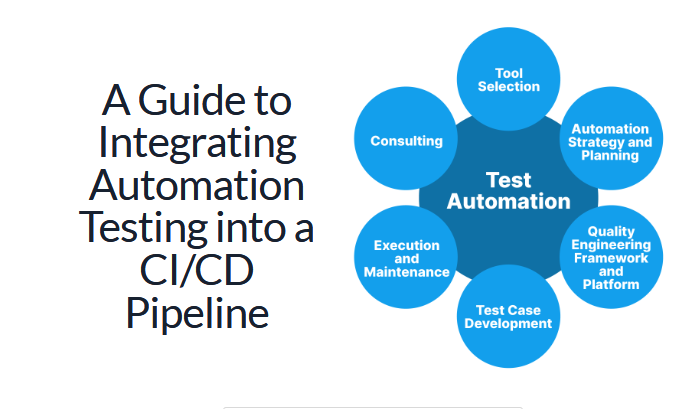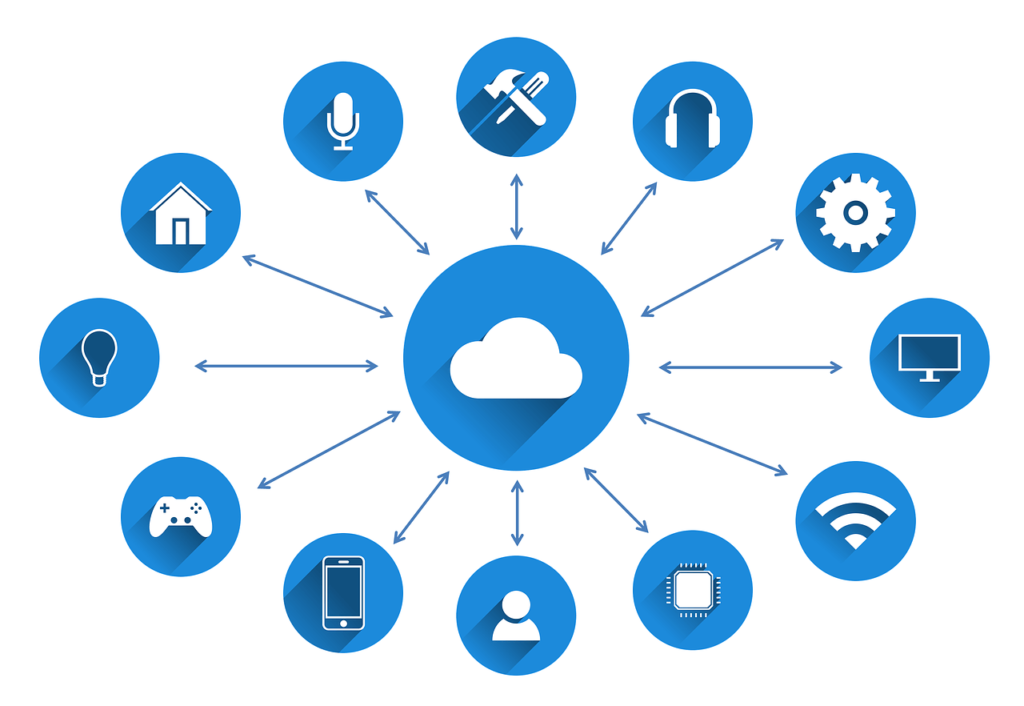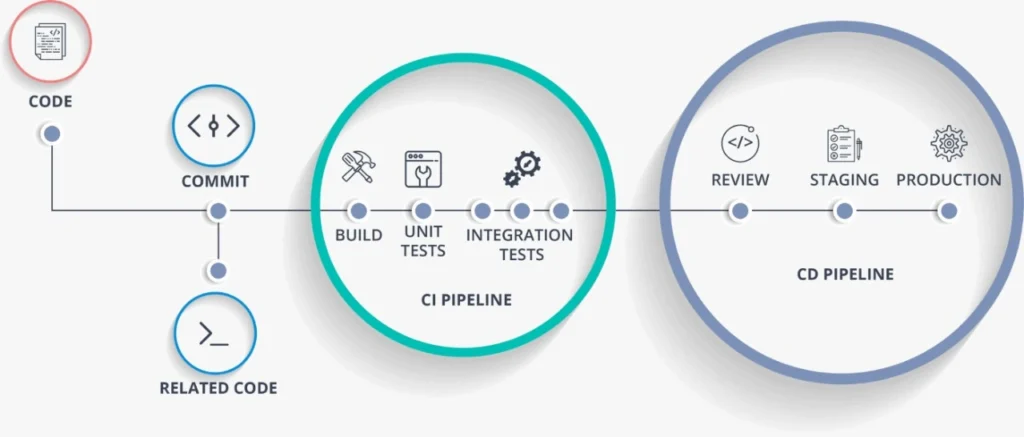A Guide to Integrating Automation Testing into a CI/CD Pipeline

Introduction
Automation testing has become an increasingly popular software testing method in recent years, with its ability to quickly and accurately test large and complex software systems.
Automation testing can reduce the time and effort required for manual testing, allowing developers to focus on other aspects of development. Integrating automation testing into a CI/CD pipeline is a critical step to ensure the reliability and success of any software development project.
Automated testing is a cost-effective and time-saving way of identifying and resolving errors in the development process.
This guide will provide an overview of the process of integrating automation testing into a CI/CD pipeline and the benefits it brings.
What is Automation Testing?

Automation testing is a process of using software tools and scripts to execute test cases. Automation testing can be used to test any software application or system, from web applications and mobile apps to desktop applications and embedded systems.
Automation testing can also be used to test the functionality and performance of any software system.
Automation testing tools can simulate a wide range of user actions and scenarios, allowing developers to quickly and accurately test the software’s functionality.
Automation testing is becoming increasingly popular due to the numerous benefits it offers, and it also reduces the time and cost associated with manual testing while also increasing accuracy and efficiency.
Here are some of the benefits of automation testing:
Reduced Time and Cost: Automation testing can significantly reduce the time and cost associated with manual testing. Automation testing eliminates the need for manual coding and manual execution of tests.
This reduces the amount of time needed to complete the tests and eliminates the cost of manual labor.
Automation testing also helps reduce the time needed for debugging and retesting. This can help reduce overall costs and ensure the quality of the software.
Improved Accuracy: Automation testing can improve the accuracy of tests by eliminating the possibility of human error.
Automation testing uses pre-programmed rules to identify errors, which ensures that tests are performed accurately and efficiently.
Automation testing is able to identify errors that might be missed by manual testing, which helps ensure the quality of the software.
Increased Efficiency: Automation testing can increase the efficiency of the testing process by automating repetitive tasks.
Automation testing eliminates the need for manual coding and manual execution of tests, which can save time and reduce costs.
It also increases the accuracy of tests by ensuring that tests are performed accurately and efficiently.
This can help reduce the time needed for debugging and retesting, which can help improve the overall efficiency of the testing process.
What is a CI/CD Pipeline?

A CI/CD pipeline is a series of steps that are used to build, test, and deploy software applications. It is an amazing way to streamline your software development workflow and automates the continuous integration and delivery process.
With this process, you can easily manage and deploy code changes, automate tests, build and package applications, and deploy them to production.
With a CI/CD pipeline, you can quickly and easily deploy software updates to your customers, ensuring your customer experience is always up to date.
It also helps reduce the number of manual steps required for deployment, making it easier for your team to focus on improving the product and not on managing deployments.
With the CI/CD pipeline, you can also easily track code changes, allowing you to identify and fix any issues that may arise easily.
It is an incredibly powerful tool for software development, allowing you to quickly and easily deploy updates and ensure that your customers always have the best possible experience.
What is Continuous Integration?
Continuous Integration (CI) is a software development practice in which developers regularly commit code to a shared repository, allowing for frequent testing and integration of the code.
CI identifies and fixes code problems quickly and efficiently, ensuring that the development process is streamlined and any issues are addressed before they become too large.
Additionally, CI can reduce the cost of development by avoiding the need for manual testing and allowing developers to use automated testing to quickly identify and address any potential issues.
What is Continuous Delivery?
Continuous Delivery (CD) is a practice in which developers continuously deliver code to a production environment, allowing for frequent and reliable releases.
This process makes sure that the code is always up to date and that any potential issues can be addressed before they cause disruptions or affect the user experience.
CD can also reduce the cost of development by allowing developers to quickly and reliably release new features and updates to their software.
What is Continuous Deployment?
Continuous Deployment (CD) is a practice in which developers deploy code to a production environment without any manual intervention.
It helps ensure that the code is always up to date and that potential issues can be addressed quickly and efficiently.
How to Integrate Automation Testing Into a CI/CD Pipeline
Integrating automation testing into a CI/CD pipeline is a critical step to ensure the success of any software development project.
Automation testing helps reduce the time and cost associated with manual testing and increases the accuracy and coverage of the tests. To integrate automated testing into a CI/CD pipeline, the following steps should be taken:
- Identify the tests to be automated: The first step is to identify the tests that should be automated. This typically involves selecting the tests that are most critical to the success of the software and that can benefit most from automation.
- Choose the automation tool: The next step is to choose the tool that will be used to execute the tests. There are a variety of automation tools available, and the tool that is chosen should be based on the needs of the project.
- Configure the CI/CD pipeline: The final step is to configure the CI/CD pipeline to include the automation tests. This typically involves adding the automation steps to the existing CI/CD pipeline and configuring them to execute the tests as part of the build process.
Most Preferable CI/CD Tools
When it comes to CI/CD tools, a wide variety of options are available. Popular open-source tools such as Jenkins, Travis CI, and CircleCI are widely used for CI/CD and offer a variety of features and customization options.
Additionally, there are many commercial solutions such as AWS CodePipeline and Azure DevOps, which offer advanced features and integrations with other services.
Ultimately, the best CI/CD tool for your project will depend on your specific requirements and the specific features you need.
When choosing a CI/CD tool, it is important to consider factors such as cost, ease of use, scalability, and integration with other services.
It is important to consider the level of customization and flexibility the tool offers and the level of support provided.
Why should you integrate automated testing into a CI/CD Pipeline?
Integrating automated testing into a CI/CD pipeline is one of the best ways to ensure quality and reliability in software development.
The CI/CD pipeline is a process that helps developers efficiently deliver code from development to production, and automated testing helps make sure the code is working properly.
By integrating automated testing into the CI/CD pipeline, developers can quickly detect and fix any bugs or performance issues before the code is deployed to production.
This helps save time and money, as well as ensures that the code is of the highest quality.
Automated testing also allows developers to move faster and be more creative, as they can quickly iterate on their code without worrying about manual testing. Plus, automated testing can be used to test different platforms and devices, ensuring that the code will work across different environments.
By integrating automated testing into the CI/CD pipeline, developers can ensure that their code is reliable, up-to-date, and of the highest quality, while also being able to move quickly and be creative.
Read Also: Free Data Formatting Tools For Developers
Conclusion
Integrating automation testing into a CI/CD pipeline is a critical step to ensure the reliability and success of any software development project.
Automation testing helps reduce the time and cost associated with manual testing and increases the accuracy and coverage of the tests.
This guide has provided an overview of the process of integrating automation testing into a CI/CD pipeline and the benefits it brings.
You can begin your CI/CD pipeline integration with LambdaTest. The cross-browser platform integrates with several CI/CD systems to help you accelerate your strong delivery pipeline and accelerate your go-to-market launch.
The documentation for all of our connections with CI/CD systems is provided here to help you get the most out of LambdaTest Selenium Grid. Get started for free with LambdaTest.





